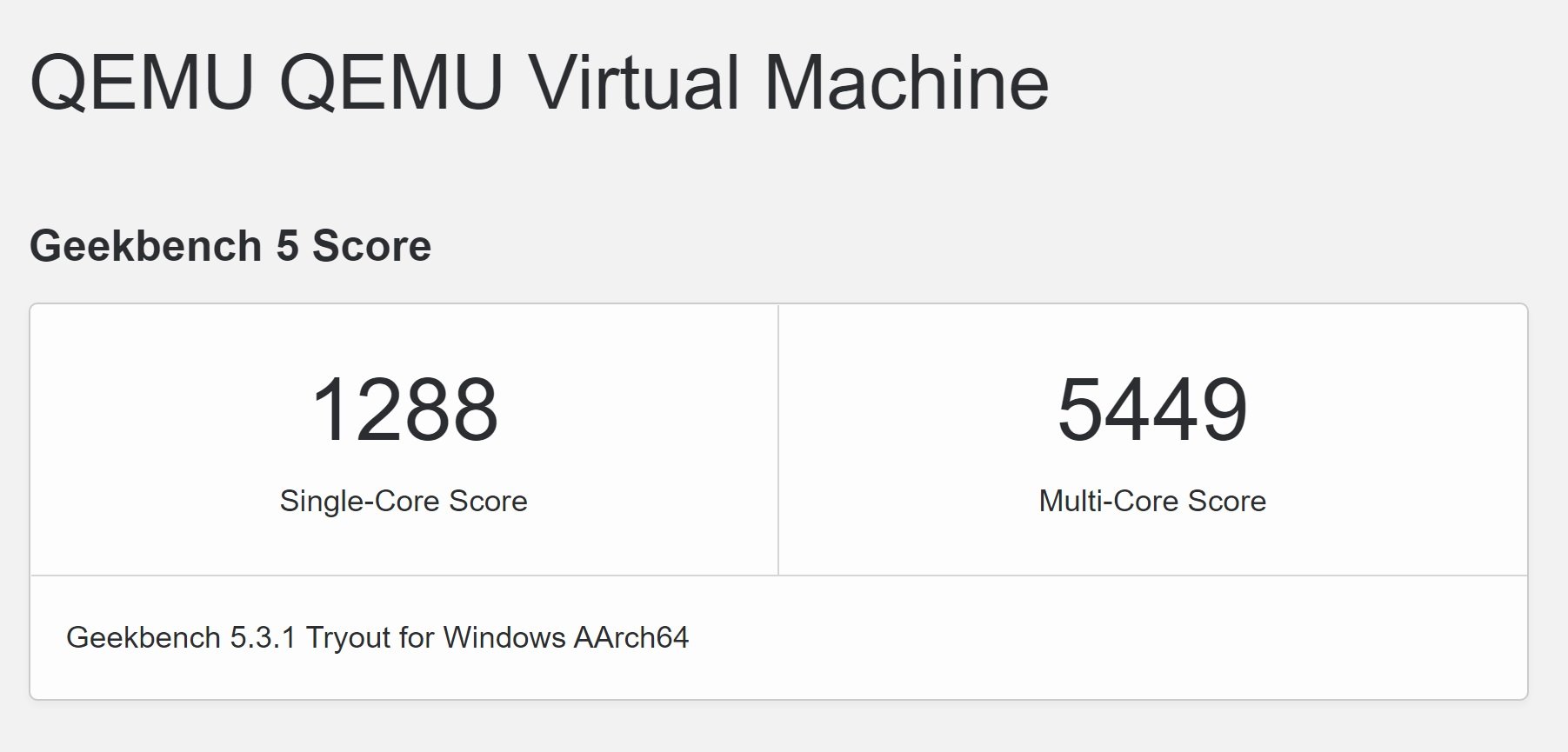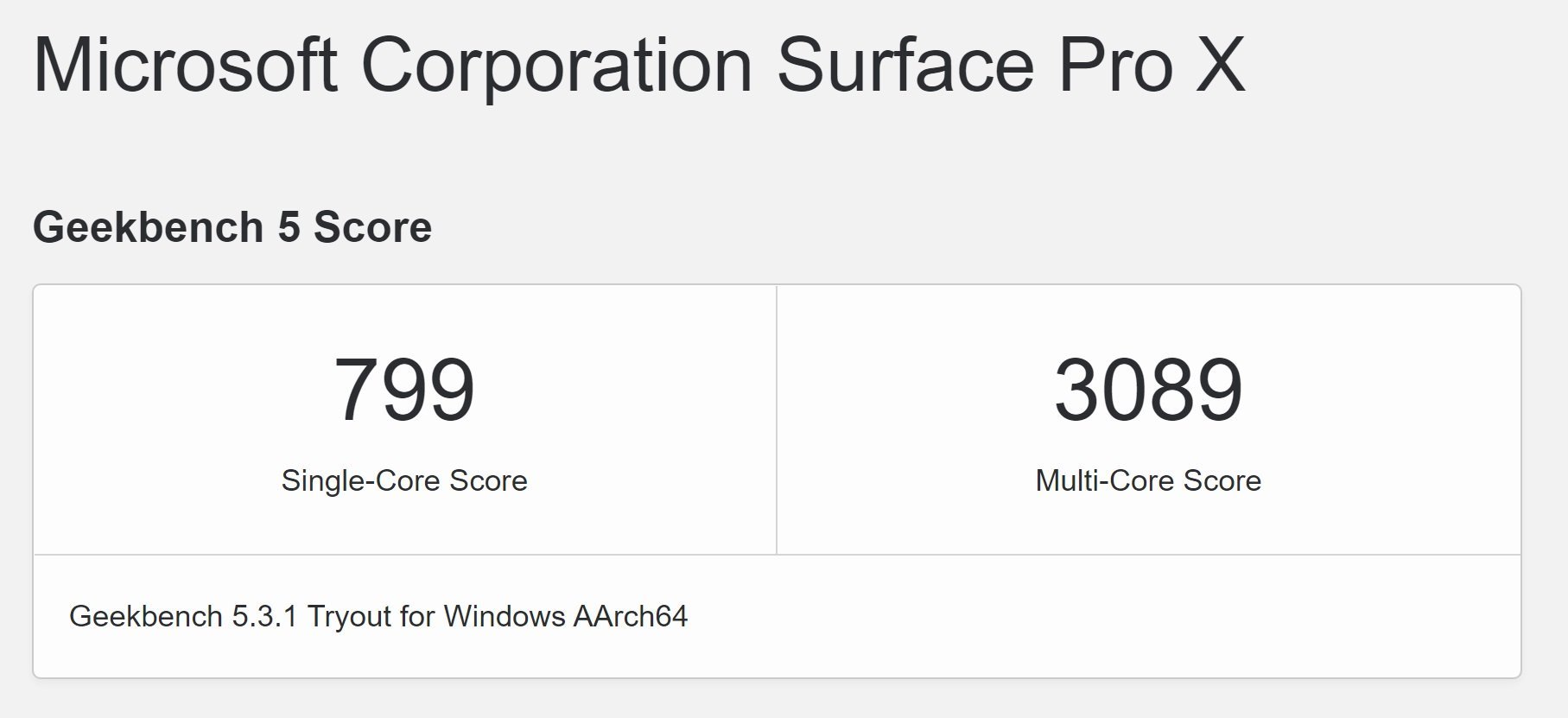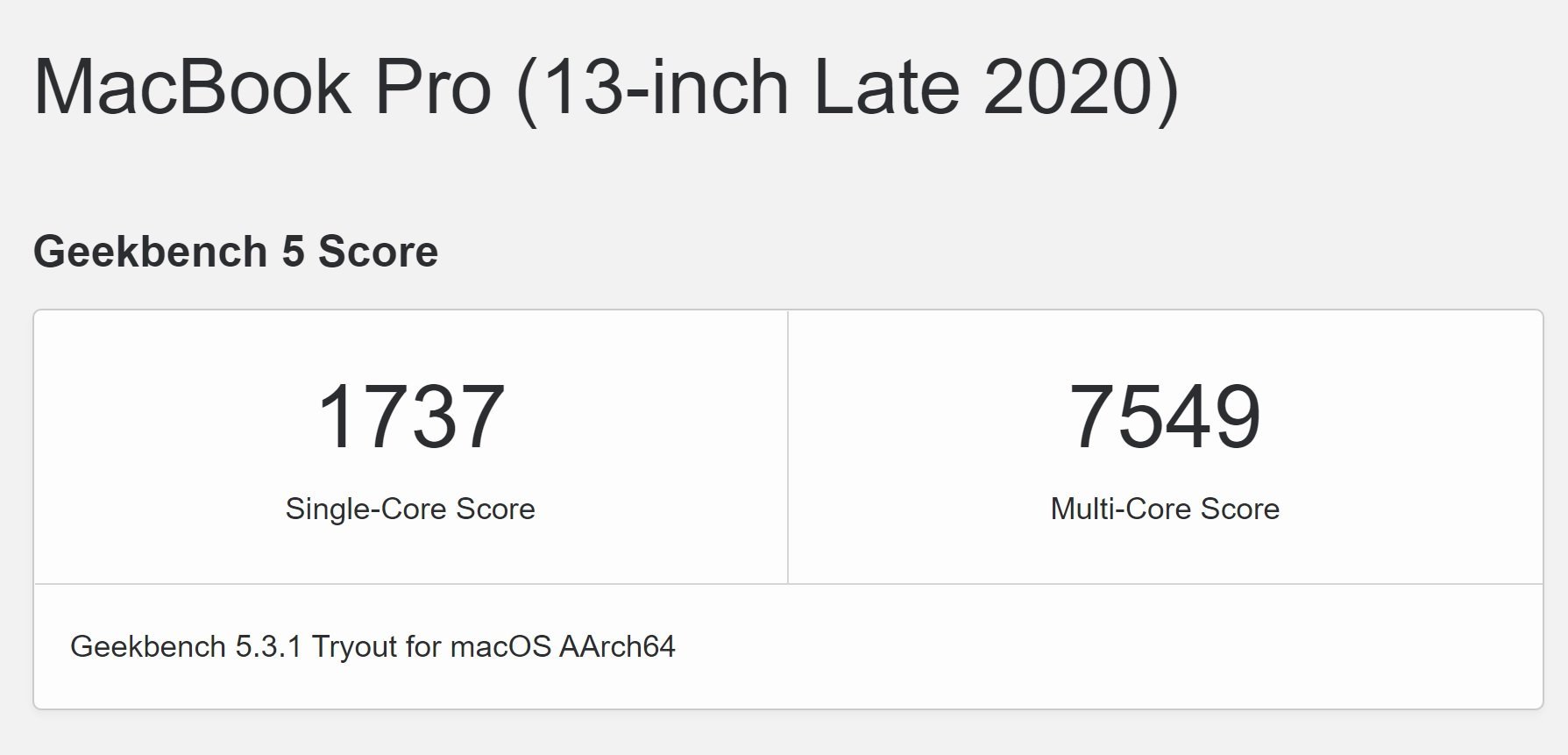We reported earlier that developer Alexander Graf has managed to get Windows 10 on ARM running on his Apple M1-powered Macbook by running it in a patched virtual machine which addresses the ARM processor directly. This allowed him to bypass any driver issues and still have a very performant solution.
Graf made his patches for the open-source QEMU virtualized freely available, and his work has now been replicated by others, which meant some benchmarks have become available to objectively assess the performance of the solution.
The news once again confirms Apple’s M1 processor is leaps and bounds ahead of the best from Qualcomm.
First, the native performance of Geekbench 5 on the Apple M1 running MacOS gives a singe-core score of 1737 and multi-core of 7549.
 For Windows 10 on ARM running in a virtual machine on the Apple M1 processor, the single-core score of 1288 and multi-core of 5449.
For Windows 10 on ARM running in a virtual machine on the Apple M1 processor, the single-core score of 1288 and multi-core of 5449.
 Lastly, for Windows 10 on ARM running on the Microsoft SQ2 processor, the single-core score of 799 and multi-core of 3089
Lastly, for Windows 10 on ARM running on the Microsoft SQ2 processor, the single-core score of 799 and multi-core of 3089
The advantage even held true for x86 apps running on the Surface Pro X and Macbook.
When running the x86 version of Geekbench 4, the Surface Pro X scored 2019 Single-Core and 6646 Multi-Core vs 2553 Single-Core and 8917 Multi-Core for the virtualized Windows 10 on ARM running its own x86 translator.
The main conclusion which can be drawn from this demo is that Apple’s M1 processor rather than MacOS 14 optimisations which is responsible for the good performance of Apple’s new Macbook range, and it remains to be seen if other ARM chip vendors can catch up.
The other is of course that if this the virtualized Windows 10 on ARM for MacOS can be optimised, a new Macbook may still be the best way to run Windows.
Read more about Graf’s QEMU patch here.

